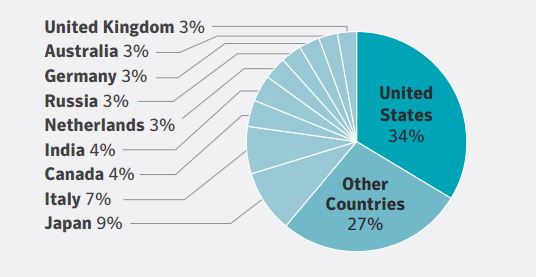Over the past few years, I’ve had the wonderful opportunity to travel the world and visit factories, distribution centers, ports, warehouses, and several offices for the company where I work. Apart from being a great way to see the world, it has also been an opportunity to learn from the ways different cultures see and manage risk.
Coming from Latin America, it was clear to me that the concept of risk management was something not highly promoted or recognized in the region.
Companies that operated locally took the approach of using intermediaries to transfer their risks to insurance companies. Occasionally I would find buyers focused on managing their own risks efficiently. But that was more than a decade ago. During my most recent trips to South America, I had the opportunity to see the implementation of a regional affinity program—a collaboration between a well-known broker and our company’s financial operations. In this case, those involved were highly educated in insurance concepts and their understanding of risk acceptance was completely in line with more developed markets.
Another interesting aspect of dealing with this program was the strong relationship between the broker and our office. It was a very cordial and open communication that transcended the usually formal interaction between these parties—and included text messages flying back and forth to get the deal done. In a way, the warm personality of South Americans permeated the business environment. So when it comes to this colorful part of the world, business is, in fact, personal.
European markets have had the opportunity to evolve over centuries and this is clearly represented in the broadness of coverages available. The highly tailored wordings, both inside and outside of Lloyds, give a global insurance program more complexity when it includes exposures in Europe.
In a way, Europe continues to be an innovation hub but with difficulties in exporting those advancements. There are still great products and coverages in the insurance market that have not found their way to the Americas—and only on a limited basis to Asia. There are reasons behind this, however. While the nature of exposures in Europe continue to be unique in multiple ways, one reason these solutions have not fully taken off is that other markets do not yet fully recognize the need for them.
Asia marked, for me, a huge difference in how I saw the business relationship around insurance and the implementation of risk management. Those markets are inherently independent from the broker relationship and thus are inclined to build direct dealings with insurers. This proves to be difficult when a foreign multinational attempts to combine Asian exposures with a global program.
There is reluctance to work with intermediaries and it can take time to transform the carrier-insured liaison, which can only happen after a trusting relationship is built.
Have you recognized patterns in some regions?
Do you think that analyzing and exploring this kind of multicultural risk management would be of benefit to organizations?

